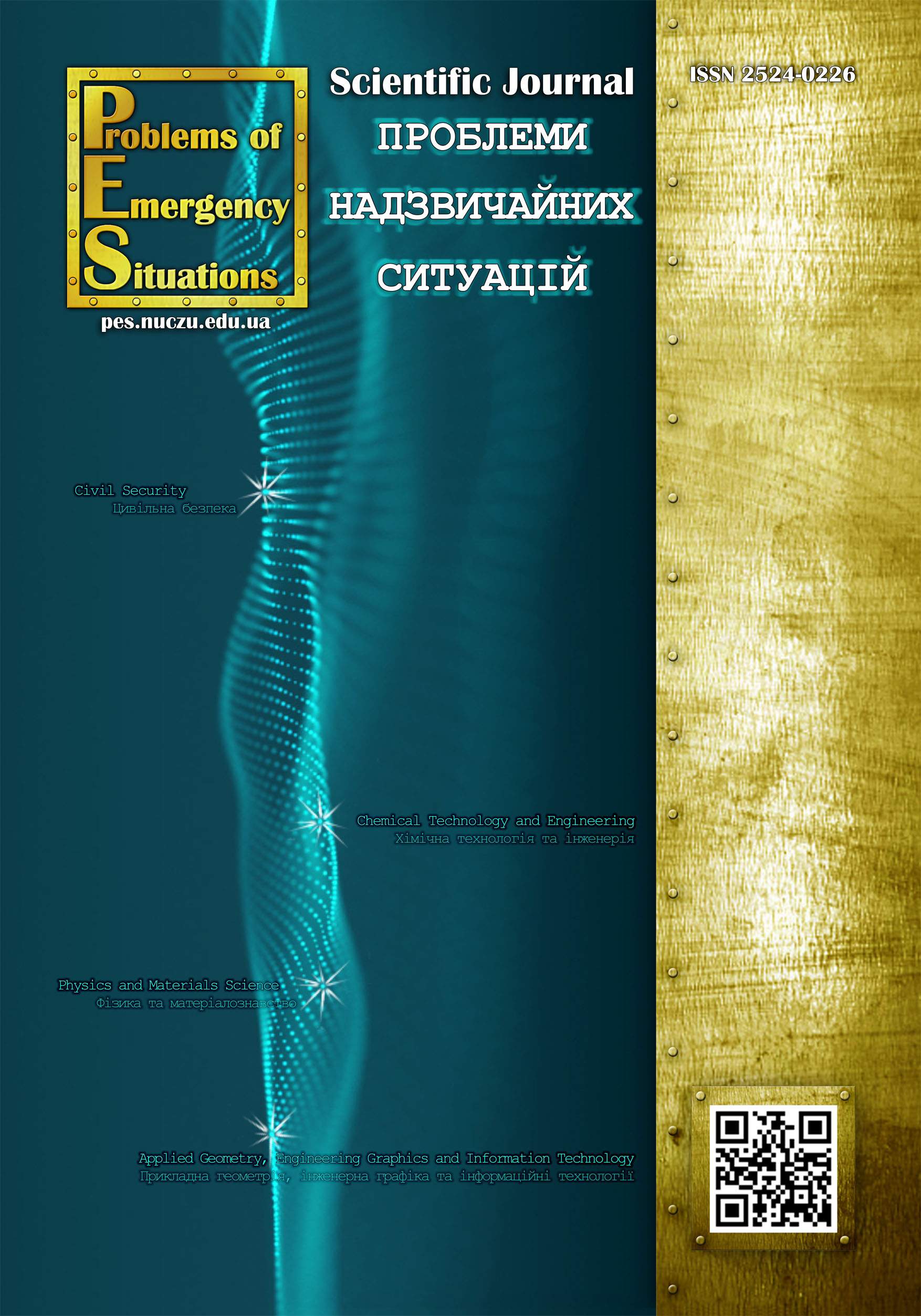Determination of various types electric lamps parameters in emergency modes of operation
Kalchenko Yaroslav
National University of Civil Protection of Ukraine
https://orcid.org/0000-0002-3482-0782
Afanasenko Kostiantyn
National University of Civil Protection of Ukraine
https://orcid.org/0000-0003-1877-1551
Oliinyk Volodymyr
National University of Civil Protection of Ukraine
https://orcid.org/0000-0002-5193-1775
Borsuk Olena
National University of Civil Protection of Ukraine
https://orcid.org/0000-0001-5759-4506
Kostyrka Olesia
National University of Civil Protection of Ukraine
https://orcid.org/0000-0002-3225-6604
DOI: https://doi.org/10.52363/2524-0226-2025-41-5
Keywords: lamp temperature, overvoltage, undervoltage, fire hazard
Аnnotation
Studies have been conducted to determine the temperature of electric lamps of various types in emergency modes of operation of power grids, namely overvoltage. Graphs of the dependence of the temperature of the bulb of incandescent lamps, arc mercury lamps and LED lamps on the voltage applied to them. Mathematical models of the value of the heating temperature of the bulb of the electric incandescent lamp, the arc mercury lamp and the LED lamp are obtained depending on the time. It is determined that the temperature of the bulb of the incandescent electric lamp increases exponentially and stabilizes after about 300 seconds. The temperature of an arc mercury lamp also varies exponentially, but, compared to an incandescent lamp, it is not so fast, but stabilizes after about 600 seconds. It is determined that in emergency modes of operation, the temperature of incandescent lamps and arc mercury lamps may exceed the normative values of temperature groups, as a result of which, when used in environments where explosive gases or vapors are present, they can become a source of ignition and lead to explosion or ignition of these substances. It is determined that the temperature of the LED lamp changes according to the linear law and after 300 seconds stops growing. Temperature dependencies of different elements of the LED lamp are built depending on the electric voltage applied to it. It was found that the driver, namely the power control chip, heats up most when the LED electric lamp is operating. It is determined that when the electric voltage decreases, the power control chip heats up more, but not significantly. It was found that the LED lamp is the best from the point of view of fire safety, since it has the lowest temperature, and also the change in the voltage of the electrical network reacts the least, which is explained by its design and principle of operation.
References
- Analytical report on fires and their consequences in Ukraine for 10 months of 2024. Available at: https://dsns.gov.ua/upload/2/2/8/5/6/0/6/analitychna-dovidka-pro-pojeji-102024-ost.pdf
- Lyn, A., Kravets, I., Ferents, N., Peleshko, M. (2023). Factors of the fire hazard of cable products. Fire Safety, 42, 56–64. doi: 10.32447/20786662.42.2023.07
- Kalchenko, Y., Afanasenko, К., Lypovyi, V., Pikalov, M. (2023). Determina-tion of Parameters of Electrical Conductors under Emergency Operating Condi-tions. Problems of Emergency Situations, 37, 305–316. doi: 10.52363/2524-0226-2023-37-22
- Deng, J., Lin, Q., Li, Y., Wang, C., Wang, H., Man, P. (2023). Effect of overload current values on the fire characteristics of polyethylene (PE) copper wires. Journal of Thermal Analysis and Calorimetry, 148, 11695–11705. Available at: https://link.springer.com/article/10.1007/s10973-023-12522-5
- Zhang, Y., Tang, K., Liu, Z., Chen, Y. (2021). Experimental study on thermal and fire behaviors of energized PE-insulated wires under overload currents. Journal of Thermal Analysis and Calorimetry, 145, 345–351. Available at: https://link.springer.com/article/10.1007/s10973-020-09745-1?fromPaywallRec=true
- Deng, J., Lin, Q.-W., Li, Y., Wang, H.-B., Wang, C.-P., Zhao, Y.-H., Lyu, H.-F., Shu, C.-M. (2023). Ignition and Flame Spreading Features of Excessively Overloaded Polyvinyl Chloride Copper Wires. Fire Technology, 59, 3589–3607. Available at: https://link.springer.com/article/10.1007/s10694-023-01482-9?fromPaywallRec=true
- Zobenko, О. (2023). Model of Fire Protection of Electrical Networks at the Places of Contact Connections. Scientific Bulletin: Сivil Protection and Fire Safety, 1(15), 141–148. doi: 10.33269/nvcz.2023.1(15).141-148
- Israel, T., Schlegel, S., Großmann, S., Kufner, T., Freudiger, G. (2019). Model-ling of Transient Heating and Softening Behaviour of Contact Points During Current Pulses and Short Circuits. IEEE Holm Conference on Electrical Contacts. doi: 10.1109/holm.2019.8923941
- Nazarovets, O., Pererva, R., Rudyk, Y., Kyrychenko, O., Yankiv, V. (2024). Experimental study of fire hazard parameters of contact connections in electrical wir-ing. Social Development and Security, 14(2), 161–178. doi: 10.33445/sds.2024.14.2.15
10. Hychpan, V., Petrovskyy, V., Rudyk, U. (2016). Standardization of testing characteristics of LED modules. Fire Safety, 28, 29–35. Available at: https://sci.ldubgd.edu.ua/jspui/handle/123456789/1816














